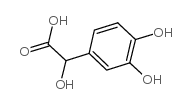| 结构式 | 名称/CAS号 | 全部文献 |
|---|---|---|
 |
DL-3,4-二羟基杏仁酸
CAS:14883-87-5 |
|
![N-[3-(2,4 -二氯苯氧基)丙基]-N -甲基- 2 -丙炔胺盐酸盐 结构式](https://image.chemsrc.com/caspic/266/17780-75-5.png) |
N-[3-(2,4 -二氯苯氧基)丙基]-N -甲基- 2 -丙炔胺盐酸盐
CAS:17780-75-5 |